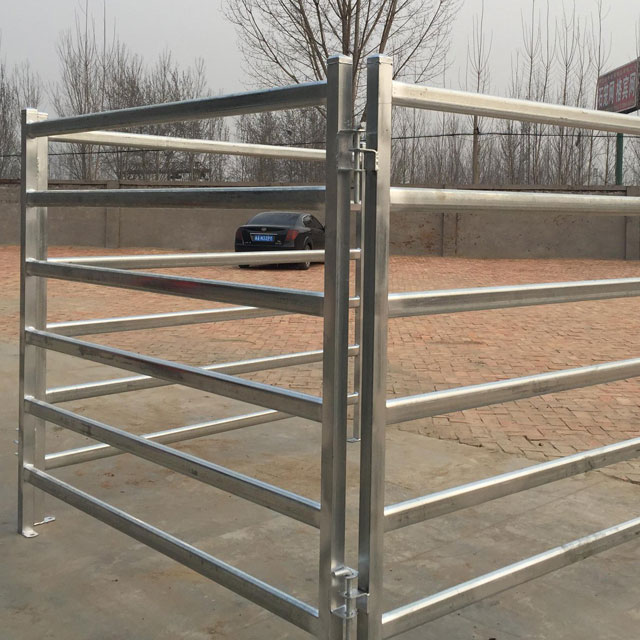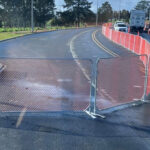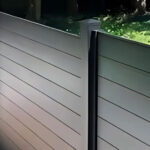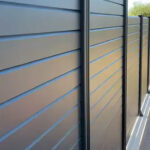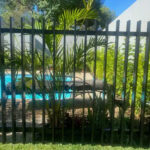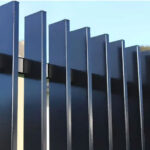How to Attach Cattle Panels to Wood Posts: A Comprehensive Guide
Are you looking for an effective way to secure your livestock or create sturdy garden structures? Attaching cattle panels to wood posts is a versatile and durable solution that can meet a variety of fencing needs. This comprehensive guide will walk you through the process, providing expert tips and tricks to ensure your fence is both functional and long-lasting. Whether you’re a seasoned farmer or a DIY enthusiast, this article will equip you with the knowledge to create a robust and reliable fence system.
Why Attaching Cattle Panels to Wood Posts is Worth Your Time
Cattle panels offer exceptional strength and versatility, while wood posts provide a solid foundation. Combining these elements creates a fence that is not only sturdy but also adaptable to various terrains and purposes. This guide will help you understand the benefits of this fencing method and provide step-by-step instructions to ensure a successful installation.
What Are Cattle Panels and Why Are They Popular for Fencing?
Cattle panels, also known as livestock panels, are rigid, galvanized wire panels typically used for containing farm animals. However, their versatility has made them popular for various applications beyond livestock containment. Here’s why they’re a favorite among farmers and DIY enthusiasts:
- Durability: Made from heavy-gauge welded wire, cattle panels are designed to withstand the pressure from large animals and harsh weather conditions.
- Versatility: These panels can be used for fencing, garden trellises, temporary pens, and more.
- Easy installation: Their rigid structure makes them easier to install compared to traditional wire fencing.
- Long-lasting: Galvanized coating provides excellent rust resistance, ensuring a long lifespan.
- Cost-effective: While initially more expensive than some wire options, their durability and low maintenance make them cost-effective in the long run.
[For more information on the benefits and uses of cattle panels, check out our detailed guide on painéis galvanizados para gado.]
What Materials Do You Need to Attach Cattle Panels to Wood Posts?
Before you begin the installation process, gather the following materials:
- Cattle panels
- Wood posts (pressure-treated for longevity)
- Fencing staples or U-nails
- Wire clips or heavy-duty zip ties
- Hammer or pneumatic stapler
- Alicates de corte
- Nível
- Escavadeira ou broca para postes
- Concrete (optional, for added stability)
How to Prepare Wood Posts for Cattle Panel Installation
Proper preparation of your wood posts is crucial for a sturdy and long-lasting fence. Follow these steps:
- Choose the right wood: Opt for pressure-treated posts that resist rot and insect damage.
- Determine post spacing: Generally, space posts 8 to 10 feet apart for optimal support.
- Dig post holes: Use a post hole digger or auger to create holes at least 2 feet deep.
- Set posts: Place posts in holes and use a level to ensure they’re straight. Fill holes with dirt or concrete for added stability.
- Allow concrete to cure: If using concrete, let it cure for 24-48 hours before attaching panels.
Step-by-Step Guide: How to Attach Cattle Panels to Wood Posts
Now that your posts are set, follow these steps to attach your cattle panels:
- Position the panel: Lean the cattle panel against the wood posts, ensuring it’s level and at the desired height.
- Secure the top: Use fencing staples or U-nails to attach the top of the panel to the post. Place one staple on each side of a wire intersection for added strength.
- Work your way down: Continue attaching the panel to the post, working your way down. Ensure the panel remains taut as you go.
- Use wire clips or zip ties: For additional security, use wire clips or heavy-duty zip ties to fasten the panel to the post every 12-18 inches.
- Overlap panels: If using multiple panels, overlap them by one square and secure the overlap to the post.
- Trim if necessary: Use wire cutters to trim panels if needed to fit your specific fence line or to create gates.
[For more detailed instructions on installing various types of fencing, including cattle panels, visit our guide on portões de painel para gado.]
What Are Some Common Challenges When Attaching Cattle Panels to Wood Posts?
While the process is generally straightforward, you may encounter some challenges:
- Uneven terrain: Use shorter posts or trim panels to accommodate slopes.
- Panel rigidity: The stiffness of cattle panels can make them challenging to bend around corners. Consider using separate panels for each section instead of trying to bend a single panel.
- Gate creation: Creating gates with cattle panels requires careful planning. Consider using a pre-made gate or creating a custom one using a separate panel and hinges.
- Panel weight: Cattle panels can be heavy. Work with a partner when lifting and attaching panels to ensure safety and ease of installation.
How to Maintain Your Cattle Panel Fence
To ensure the longevity of your fence, follow these maintenance tips:
- Regular inspections: Check for any loose attachments, damaged wires, or signs of post rot.
- Tighten connections: Periodically check and tighten any loose staples, U-nails, or wire clips.
- Address rust promptly: If you notice any rust on the panels, clean the affected area and apply a rust-inhibiting paint.
- Trim vegetation: Keep plants and vines from growing on the fence, as they can cause damage over time.
- Repaint or treat wood posts: Every few years, consider repainting or treating wood posts to protect against weather damage.
Creative Uses for Cattle Panel Fences Beyond Livestock Containment
While primarily used for livestock, cattle panel fences have numerous other applications:
- Garden trellises: Create sturdy supports for climbing plants like cucumbers, tomatoes, and beans.
- Raised bed supports: Use panels as sides for raised garden beds or to create vertical growing spaces.
- Temporary structures: Quickly assemble temporary pens or enclosures for events or short-term needs.
- Decorative elements: With some creativity, cattle panels can be used to create unique garden arches or privacy screens.
- Animal enclosures: Create safe spaces for smaller animals like chickens or goats.
[For more innovative ideas on using cattle panels in your garden or farm, check out our article on cattle horse panels.]
Conclusion: Is Attaching Cattle Panels to Wood Posts Right for Your Project?
Attaching cattle panels to wood posts offers a robust, versatile, and long-lasting fencing solution suitable for various applications. By following the steps and tips outlined in this guide, you can create a sturdy fence that will serve you well for years to come.Remember these key points when considering this fencing method:
- Cattle panels offer strength and versatility
- Proper post preparation is crucial for stability
- The installation process is relatively straightforward but may require some physical effort
- Regular maintenance can significantly extend the life of your fence
- This fencing method can be adapted for various uses beyond livestock containment
With these considerations in mind, you can confidently decide if attaching cattle panels to wood posts is the right solution for your fencing needs. Why not give it a try and experience the benefits for yourself?
